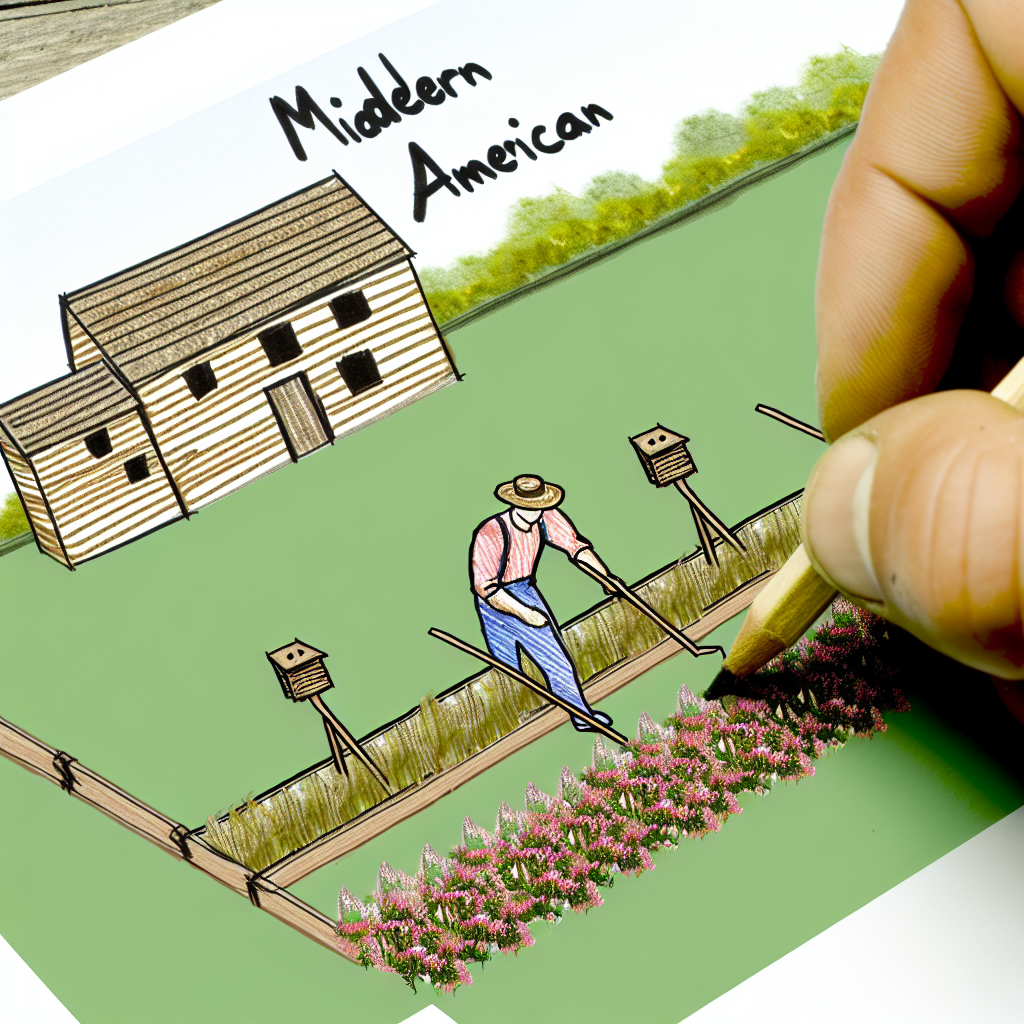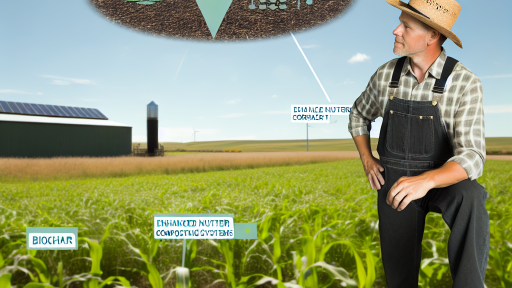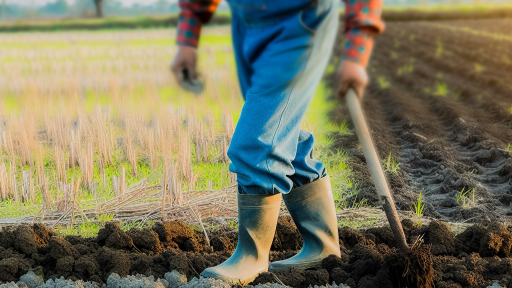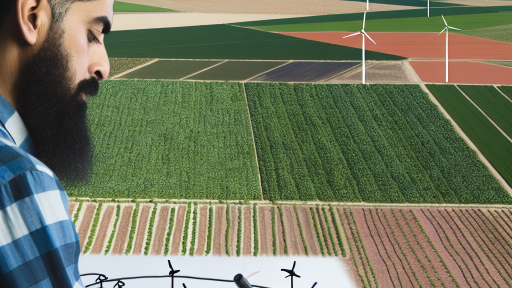Introduction to Wildlife-Friendly Farming
Importance of Wildlife-Friendly Practices
Wildlife-friendly farming plays a crucial role in the ecosystem.
It enhances biodiversity, which supports overall environmental health.
Moreover, healthier ecosystems lead to better crop yields.
This practice also helps to protect endangered species.
Farmers can preserve native wildlife by creating safe habitats.
Benefits of Implementing Wildlife-Friendly Practices
Implementing these practices brings multiple advantages to farmers.
First, it can improve soil health, leading to sustainable agriculture.
Additionally, pest control can naturally occur through wildlife dynamics.
This reduces the need for harmful pesticides.
Also, wildlife-friendly farms may attract tourists interested in nature.
Examples of Wildlife-Friendly Strategies
Farmers can introduce hedgerows to provide shelter for various species.
Creating wetlands can attract beneficial insects and birds.
Organic farming methods limit chemical use and promote biodiversity.
Cover cropping supports soil fertility and offers habitat for wildlife.
Finally, integrating livestock management with wildlife protection promotes coexistence.
Transform Your Agribusiness
Unlock your farm's potential with expert advice tailored to your needs. Get actionable steps that drive real results.
Get StartedKey Principles of Sustainable Agriculture and Wildlife Conservation
Protecting Biodiversity
Protecting biodiversity is essential for sustainable farming practices.
Farmers should create habitats for various wildlife species.
This approach helps maintain a balanced ecosystem.
Planting native vegetation can provide shelter and food for local fauna.
Moreover, diverse crops enhance soil health and resilience.
Implementing Sustainable Practices
Sustainable practices are crucial for long-term agricultural success.
Crop rotation can prevent soil depletion and pest outbreaks.
Cover cropping improves soil structure and fertility.
Integrating livestock can diversify production and enhance nutrient cycling.
Furthermore, reduced chemical inputs benefit both farm and wildlife.
Water Conservation Measures
Water conservation is another vital aspect of sustainable farming.
Implementing drip irrigation systems reduces excessive water use.
Farmers can capture rainwater to irrigate crops during dry periods.
Additionally, creating buffer strips around water bodies helps protect aquatic life.
These measures collectively promote healthy ecosystems.
Reducing Chemical Use
Reducing chemical use is essential for protecting wildlife.
Farmers can adopt integrated pest management to minimize pesticide reliance.
Utilizing organic fertilizers can enhance soil health without harming wildlife.
Furthermore, monitoring environmental impacts ensures sustainable practices.
Community Engagement and Education
Engaging with the community fosters support for sustainable initiatives.
Farmers can organize workshops to educate others about wildlife-friendly practices.
Sharing success stories inspires others to adopt similar methods.
This collaboration builds a stronger commitment to conservation efforts.
Habitat Creation: Strategies for Enhancing Biodiversity on Farms
Understanding the Importance of Biodiversity
Biodiversity strengthens ecosystems on farms.
Showcase Your Farming Business
Publish your professional farming services profile on our blog for a one-time fee of $200 and reach a dedicated audience of farmers and agribusiness owners.
Publish Your ProfileIt supports various species, including pollinators and beneficial insects.
More biodiversity leads to healthier crops and better yields.
Planting Native Species
Planting native flora enriches local habitats.
These plants often require fewer resources and reduce chemical use.
Native species also attract local wildlife, enhancing biodiversity.
Consider incorporating wildflowers and native grasses in farm edges.
Creating Wildlife Corridors
Wildlife corridors connect fragmented habitats.
These pathways enable safe movement for various species.
Establishing corridors encourages genetic diversity among populations.
Design attractive spaces with a mix of plants and structures.
Building Insect Hotels
Insect hotels provide essential habitats for beneficial bugs.
Include various materials like wood, bamboo, and straw in your design.
These structures will attract pollinators and pest predators.
Position them in sunny, sheltered sites for best results.
Implementing Water Features
Water features create habitats for numerous species.
Birds, amphibians, and beneficial insects all utilize water sources.
Construct ponds or small wetlands to enhance biodiversity.
These features improve the aesthetic value of your farm as well.
Minimizing Chemical Use
Reducing chemical pesticide and fertilizer use promotes biodiversity.
Opt for organic methods to manage pests and boost soil health.
This practice encourages beneficial organisms to thrive on your farm.
Incorporating Hedgerows and Buffer Strips
Hedgerows shelter wildlife and act as natural barriers.
They provide food and habitats for birds and small mammals.
Buffer strips improve water quality by reducing runoff from fields.
Consider planting native shrubs to create effective hedgerows.
Engaging with Local Conservation Efforts
Partnering with conservation organizations fosters collaboration.
These groups can offer resources and expertise for habitat projects.
Participating in local initiatives helps promote regional biodiversity.
Engage with community members to raise awareness and support.
Uncover the Details: Natural Recycling Methods for Agricultural Waste
Water Management Practices that Support Wildlife
Creating Sustainable Water Sources
Establishing ponds can benefit local wildlife significantly.
Ponds provide drinking water for animals during dry spells.
They also support aquatic plants that enhance biodiversity.
Including native plants around ponds improves the habitat.
Native vegetation provides shelter and food for wildlife.
Implementing Rainwater Harvesting
Rainwater harvesting captures valuable water resources efficiently.
This practice reduces the need for groundwater extraction.
It benefits surrounding ecosystems by maintaining local water tables.
Farmers can use harvested water for irrigation and livestock.
This approach helps in conserving water and protecting habitats.
Showcase Your Farming Business
Publish your professional farming services profile on our blog for a one-time fee of $200 and reach a dedicated audience of farmers and agribusiness owners.
Publish Your ProfileMaintaining Natural Watercourses
Protecting natural streams and rivers is crucial for wildlife.
These watercourses offer vital habitats for numerous species.
A well-maintained watershed supports local biodiversity effectively.
Farmers should minimize pollution entering these natural systems.
Additionally, planting buffer strips around waterways can help.
Creating Wetlands
Constructing constructed wetlands can enhance water quality.
Wetlands filter contaminants, benefiting both farms and wildlife.
They create habitats for various aquatic species and birds.
Moreover, wetlands can help mitigate flooding impacts on farms.
This practice fosters resilience against climate change challenges.
Implementing Drip Irrigation
Drip irrigation conserves water and minimizes waste effectively.
This technique delivers water directly to plant roots.
Less water runoff enhances local ecological health.
Furthermore, it reduces soil erosion and nutrient loss.
This practice can improve crop yield while sustaining wildlife habitats.
Find Out More: Organic Water Conservation Methods for Farmers
Integrating Native Plants to Attract Beneficial Wildlife
The Importance of Native Plants
Native plants provide essential habitats for local wildlife.
They create a supportive ecosystem that promotes biodiversity.
Additionally, native species require less maintenance and water.
Using these plants can significantly reduce the need for pesticides.
Choosing the Right Native Plants
Select plants that thrive in your local environment.
Consider soil type, sunlight exposure, and moisture levels.
Popular choices include asters, coneflowers, and milkweed.
These plants attract pollinators and beneficial insects.
Creating a Diverse Planting Scheme
Diversity encourages a robust ecosystem on your farm.
Incorporate a mix of flowering plants, shrubs, and trees.
This variety supports different species of wildlife.
It also provides food and shelter throughout the year.
Designing Wildlife Habitats
Implementing strategic layouts can enhance wildlife habitats.
Create clusters of native plants to form natural shelters.
Incorporate water sources to attract birds and other wildlife.
Consider leaving some areas unmowed for ground-nesting birds.
Maintaining Native Plant Gardens
Periodic maintenance is essential for native plant gardens.
Remove invasive species to protect local flora and fauna.
Mulching can help with moisture retention and weed suppression.
Monitor plant health to ensure a thriving ecosystem.
Engaging the Community
Involve the local community in planting efforts.
Host workshops to educate others about the benefits of native plants.
Collaborative efforts can boost community pride and involvement.
Encouraging diverse participation enhances the success of native gardens.
Showcase Your Farming Business
Publish your professional farming services profile on our blog for a one-time fee of $200 and reach a dedicated audience of farmers and agribusiness owners.
Publish Your ProfileYou Might Also Like: IPM Techniques to Combat Common Crop Pests

Pest Management: Organic Solutions that Protect Wildlife
Understanding Organic Pest Management
Organic pest management focuses on natural methods to control pests.
This approach minimizes the use of synthetic chemicals.
It also promotes biodiversity and ecosystem health.
Farmers should understand the pest life cycles to manage them effectively.
Utilizing Beneficial Insects
Encouraging beneficial insects can significantly reduce pest populations.
Ladybugs and lacewings are excellent natural predators of aphids.
Planting flowers such as marigolds attracts these helpful insects.
This strategy minimizes reliance on chemical pesticides.
Implementing Crop Rotation
Crop rotation disrupts pest life cycles and reduces soil-borne diseases.
By changing crops each season, farmers can confuse pests.
This method enhances soil fertility and breaks pest infestation patterns.
A diverse planting strategy improves overall farm resilience.
Using Organic Mulches
Organic mulches block weeds and retain soil moisture.
Additionally, they provide habitat for beneficial organisms.
Using straw or shredded leaves can deter certain pests.
This technique supports healthy soil and reduces pest pressure.
Homemade Solutions and Natural Repellents
Many natural ingredients can deter pests effectively.
Garlic spray acts as a repellent for many insects.
Soap solutions can also control soft-bodied pests like aphids.
Essential oils such as peppermint or neem oil repel various insects.
Fostering a Healthy Ecosystem
Creating a balanced ecosystem protects wildlife and supports farming efforts.
Planting cover crops promotes soil health and attracts pollinators.
Integrating livestock can help manage pests naturally.
This holistic approach enhances farm sustainability and productivity.
Uncover the Details: Water-Saving Technologies in Sustainable Agriculture
Animal Husbandry Practices that Promote Animal Welfare and Biodiversity
Understanding Animal Welfare
Animal welfare is crucial for sustainable farming practices.
It ensures that animals are treated humanely and ethically.
Farmers can enhance welfare by providing proper housing and care.
Access to fresh air and sunlight significantly improves their health.
Additionally, nutritious diets contribute to overall well-being.
Encouraging Diverse Animal Breeds
Diverse animal breeds promote ecosystem resilience.
Farmers should consider incorporating local breeds into their livestock.
These breeds often possess traits suited for specific environments.
By maintaining a variety of breeds, farmers boost genetic diversity.
This strategy helps in adapting to changing climate conditions.
Implementing Rotational Grazing
Rotational grazing benefits both livestock and the land.
This method involves moving animals between pastures.
It prevents overgrazing and allows vegetation to recover.
Consequently, healthier grasslands support various wildlife species.
Showcase Your Farming Business
Publish your professional farming services profile on our blog for a one-time fee of $200 and reach a dedicated audience of farmers and agribusiness owners.
Publish Your ProfileImproved soil health follows from well-managed grazing systems.
Integrating Crop and Livestock Systems
Integrating crop and livestock systems enhances sustainability.
Using animal manure as fertilizer recycles nutrients effectively.
Additionally, this practice reduces dependency on chemical inputs.
It fosters a balanced ecosystem on the farm.
Animals can also help manage pests within crop fields.
Creating Natural Habitats
Setting aside areas for wildlife is essential for biodiversity.
Farmers can create hedgerows and buffer strips around fields.
These habitats provide shelter and food for various species.
Encouraging pollinator populations aids in crop production.
Furthermore, natural predators help control pest populations.
Utilizing Sustainable Feed Sources
Choosing sustainable feed sources minimizes environmental impacts.
Farmers can source local, organic feeds to reduce transportation emissions.
This choice supports local economies and farmers.
Additionally, incorporating forage crops contributes to soil health.
Alternative protein sources, like insects, can also be explored.
Continuous Education and Collaboration
Farmers should engage in continuous education about best practices.
Collaboration with agricultural organizations enhances knowledge sharing.
Participating in workshops and field days informs farmers on innovations.
Networking with peers fosters community support and adaptation.
Regular updates on research ensure practices remain relevant.
Community Engagement: Educating Farmers on Wildlife-Friendly Practices
Importance of Community Engagement
Community engagement fosters collaboration among local farmers.
It encourages sharing of knowledge and experiences regarding wildlife-friendly practices.
Moreover, it builds a support network that promotes sustainable farming.
As a result, farmers can learn from one another’s successes and challenges.
Workshops and Training Sessions
Organizing workshops is a vital step in educating farmers.
These sessions provide hands-on experience with wildlife-friendly methods.
Farmers can learn about crop rotation and integrated pest management.
Additionally, training covers habitat conservation and biodiversity enhancement.
Success Stories from Local Farmers
Sharing success stories can inspire other farmers.
Highlighting local success brings attention to effective practices.
For example, Rachel’s farm saw increased bird populations after implementing habitat strips.
This approach not only improved biodiversity but also pest control.
Utilizing Local Resources
Local resources can significantly aid farmers in sustainable practices.
Extension services often have programs dedicated to wildlife conservation.
Connecting farmers with these resources enhances knowledge transfer.
Furthermore, local organizations can provide funding for sustainable initiatives.
Creating Educational Materials
Developing educational materials is crucial for ongoing learning.
Farmers benefit from guides that simplify complex topics.
These materials can include brochures and online resources about best practices.
Showcase Your Farming Business
Publish your professional farming services profile on our blog for a one-time fee of $200 and reach a dedicated audience of farmers and agribusiness owners.
Publish Your ProfileIncorporating visual aids helps clarify key concepts.
Encouraging Peer-to-Peer Learning
Peer-to-peer learning fosters mutual support among farmers.
It allows them to discuss challenges and brainstorm solutions together.
Furthermore, this method strengthens community bonds.
Collaborative projects can arise from shared interests in wildlife conservation.
Measuring Impact and Continuous Improvement
Regular assessment helps measure the effectiveness of educational efforts.
Farmers can provide feedback on workshops and training sessions.
This feedback is critical for making necessary adjustments.
Consequently, continuous improvement leads to better outcomes.
Additional Resources
Sustainable Agriculture vs. Industrial Agriculture – FoodPrint
From boutique to mainstream: Upscaling wildlife‐friendly farming …




